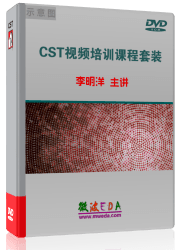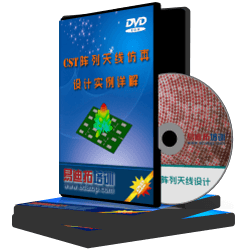好了,说了那么多,现在我们开始第一期在线翻译吧
点击下面的链接,按照下面的方式进入翻译版面:
CST MICROWAVE STUDIO-->excitation source-->excitation source overview
------------------------------------------------------------------------------------------------------------------------------------------------------
http://bbs.mwtee.com/onlinestudy/Online%20Help/cst_studio_suite_help.htm
------------------------------------------------------------------------------------------------------------------------------------------------------
占楼备用,用于放置翻译后文档和在线翻译结果
占楼,用于奖励翻译人员名单等操作
翻译结束后将在cst交流区发布中文教程,并公布参与翻译人员,日后制作的教程也会注明
对大家来说可以一边学软件,一边练翻译能力,阅读能力
我英语不行,慢慢看还是看得懂,翻译就不行了,呵呵,友情顶一下
要尝试,多几次就会慢慢熟悉了,与大家一起讨论一起学习,回头想想以前自己读书的时候浪费了很多时间啊
呵呵,行哈,我这周在搞这个IE3D,才看了200多页哟,等完了我就来弄这个CST哈,友情支持你哈,呵呵
CST MICROWAVE STUDIOoffers several different excitation sources, depending on the specific application and structure types. In the following a short overview list is given, please refer to the respective overview pages to learn more about the corresponding excitation source type.
CST微波工作室为大家提供了多种不同激励源用于特定结构类型的应用。下面的列表给出了其简短概述,请参考相关页面了解更多激励源信息。
·ports端口
Usually used for S-Parameter calculations
通常用于S参数计算
The S-matrix describes the transmission of electromagnetic field energy between different ports of a structure. These ports, especially their name and location, need to be defined in CST MICROWAVE STUDIO®. Two different kinds of ports exist: Waveguide Ports and Discrete Ports. You must first decide which port to use at a particular location. The type of the ports may vary within a structure, of course.
S矩阵描述了结构不同端口间电磁场能量的传输特性,在CST微波工作室中必须定义这些端口,尤其是它们的名字和位置。在CST微波工作室中有两种不同类型的端口存在:波导端口和离散端口,因此,你必须首先确定在特定位置处该使用什么端口,当然,在结构内部端口的类型可能会不同。 ![]()
-
Discrete Ports (lumped elements)
- 离散端口(集总元件)
Discrete ports are available as S-Parameter, voltage or current port. They are mainly used to simulate lumped element sources inside the calculation domain and can be used for TEM-like modes.
Input: Knowledge of TEM-mode, line impedance (voltage or current respectively)
Output: Voltage or current
离散端口可用于S-Parameter, voltage or current 端口,其主要用于计算域内部的仿真集总元件源,同时可用于TEM-like 模式。
我从来都是直接看英文的,不是很喜欢翻译
友情支持……
声明:网友回复良莠不齐,仅供参考。如需更专业系统地学习CST,可以购买资深专家讲授的CST最新视频培训课程。


